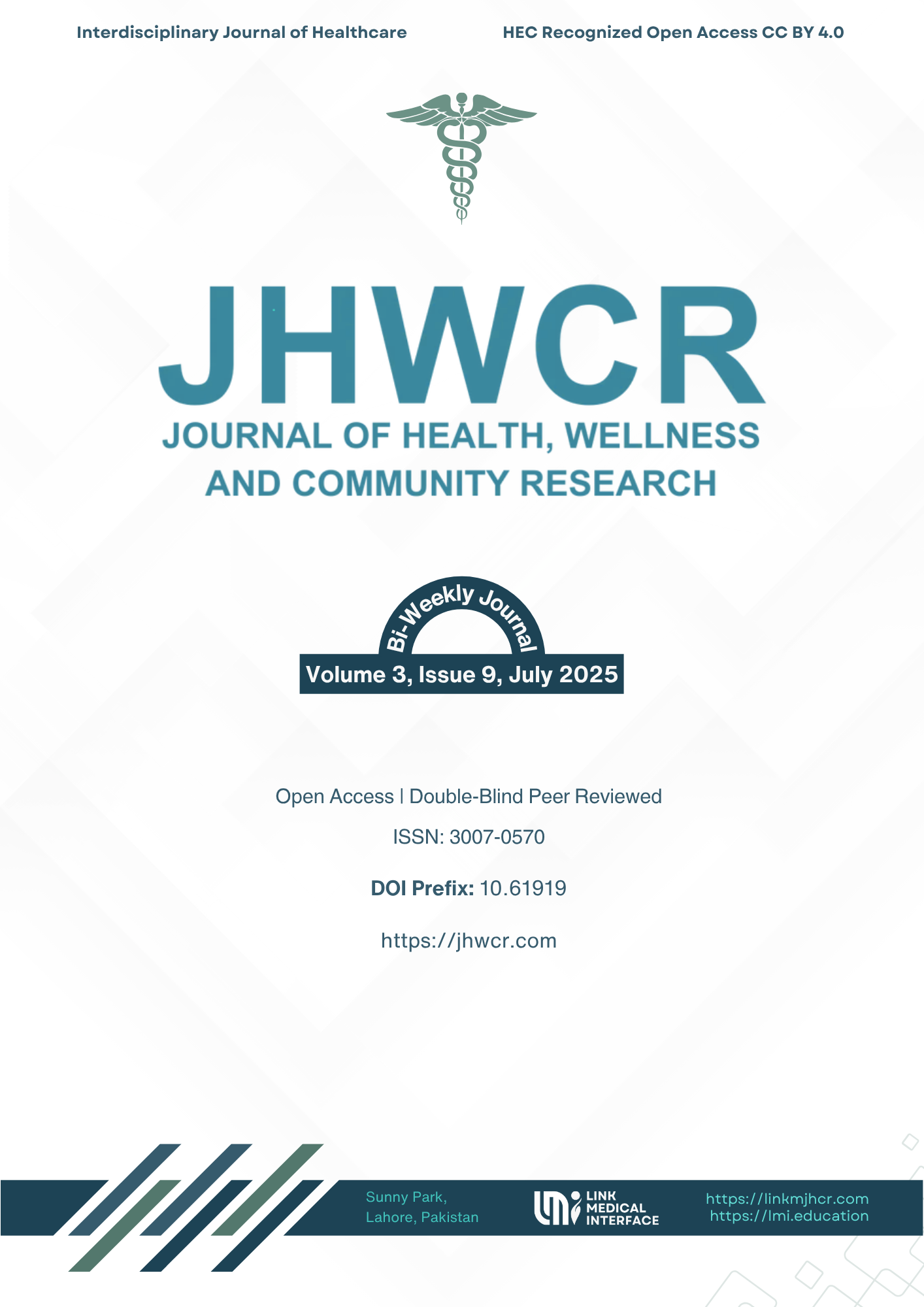A Molecular Approach of Diagnosing H. pylori and Its Correlation with Haematological and Biochemical Parameters
DOI:
https://doi.org/10.61919/k4snxr82Keywords:
Helicobacter pylori, qPCR, iron deficiency anemia, C-reactive protein, molecular diagnostics, dyspepsiaAbstract
Background: Helicobacter pylori infection is highly prevalent worldwide and has been implicated in diverse gastric and extra-gastric diseases, including iron deficiency anemia and systemic inflammation. Conventional diagnostic methods often have limitations in sensitivity, accessibility, and invasiveness, particularly in resource-limited settings. Objective: This study aimed to assess the utility of blood-based quantitative PCR (qPCR) for the molecular diagnosis of H. pylori infection and to investigate its correlation with haematological and biochemical parameters among untreated dyspeptic patients. Methods: A cross-sectional observational study was conducted involving 120 untreated dyspeptic adults recruited from a tertiary care laboratory in Karachi, Pakistan. Haematological and biochemical markers were assessed using standard laboratory methods. Anti-H. pylori antibodies were detected by ELISA, with subsequent qPCR confirmation on blood samples for positive cases. Statistical analyses included t-tests, Pearson correlation coefficients, and p-values for group comparisons. Results: H. pylori-infected individuals exhibited significantly lower hemoglobin, red blood cell, iron, and ferritin levels compared to controls (p < 0.001), alongside elevated C-reactive protein, amylase, and lipase. Blood-based qPCR detected H. pylori DNA in 70% of seropositive cases pre-treatment and enabled identification of persistent infection in 30% of cases after therapy, indicating potential resistance. Conclusion: Blood-based qPCR offers a sensitive diagnostic modality for H. pylori and demonstrates a strong association between infection and altered haematological and biochemical profiles. Integration of molecular diagnostics may improve disease detection and management in high-prevalence populations.
Downloads
Published
Issue
Section
License
Copyright (c) 2025 Rubina Ghani, Shaista Emad, Faizan Ali, Abdul Wahab, Waleed Khan, Mohammad Sher Khan, Huzaifa Tahir, Syed Ali Haider Zaidi, Hamza Sohail (Author)

This work is licensed under a Creative Commons Attribution 4.0 International License.


